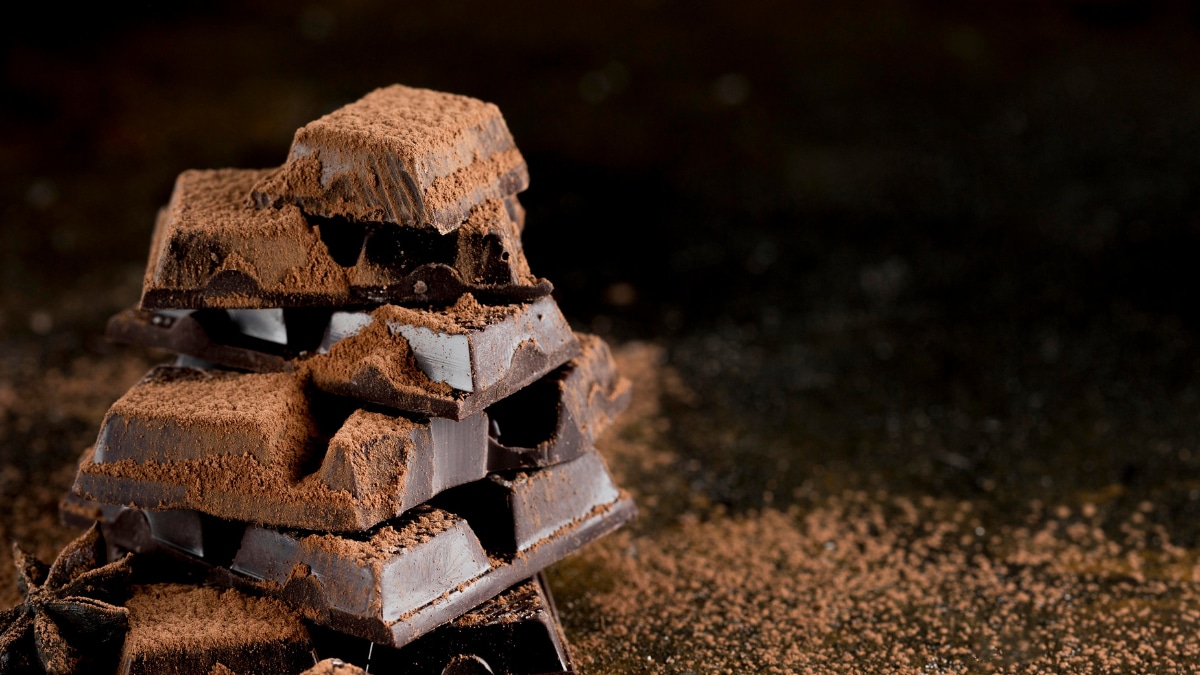How A Chocolate Giant Changed The Sustainability Narrative For Cocoa Making Brands

On World Chocolate Day, we celebrate the journey of Mondelēz India, a chocolate giant that successfully won over the hearts of Mithai eating Indians. Through its irresistible offerings and strategic approach, the company managed to carve a niche in a culture dominated by traditional sweets, leaving a lasting impact on chocolate lovers across the nation. We understand from Roopak Bhat, Cocoa Operations Lead- India, Mondelēz International how they conquered the palates of mithai aficionados and their sustainable bean to bar journey.
Question 1: What’s Mondelēz ’s bean-to-bar journey?
Answer: By bringing the first taste of chocolate to Indian consumers in 1948, Mondelez India (erstwhile Cadbury Ltd.) has built a legacy spanning seven decades. As the leading chocolate makers in the country, we wanted to not only keep defining the taste of chocolate, but also ensure they were made the right way. With our farming community and their development at the heart of it, we wanted to build an ecosystem that allowed us to achieve self-sufficiency in producing and procuring the key component of our most loved product – Cocoa. This gave birth to our first steps towards introduction of Cocoa in India way back in 1965, and with the commencement of Cocoa Life program (earlier known as Cadbury Cocoa partnership program) in 2010. The crop, not indigenous to India, was first introduced to the country 58 years back when Mondelez India, erstwhile known as Cadbury, set up a cocoa farm in Kerala. As cocoa became a viable crop, its adoption extended to the neighboring states of Tamil Nadu, Andhra Pradesh, and Karnataka. Five decades later, our bean to bar journey is being championed by a thriving community of 100,000 farmers who have taken up cocoa farming, making us the single largest corporate organization to nurture and promote cocoa cultivation in India. across the four southern states.
In the case of India’s cocoa story, the bean to bar journey did not just mean scaling the produce and adding more farmers to the fold, but to also empower the farmers with the right knowledge, skill, training and means to create self-sufficiency in the process. Mondelez India was the first to introduce intercropping technique that enabled the farmers to grow cocoa alongside other crops like coconut, areca nut, oil palm, etc., thereby making it a more viable option. But it wouldn’t be possible to achieve all the success without our women farmer community who have played an important role in creating a sustainable supply of cocoa. This was possible at the back of engagements focused on empowering and training women in cocoa farming, finance and health as well as supporting tribal farmers in remote locations to create their own cocoa businesses and improve their livelihoods.
Elevating its promise of sustainability in its bean to bar journey a step ahead, Mondelez has also introduced strategic measures in addition to sourcing. This includes the introduction of advanced technologies in factories promoting sustainable manufacturing practices, elevating our distribution network to designing recyclable packaging; overall building a circular ecosystem, all the way from the farm to the fridge. As a company that is committed to bringing newer eat experiences to India, with community well-being at its core, our bean to bar journey is one that inspires a larger change through the lens of an empowered and engaged community that aims to take India to the global cocoa map.
Question 2: How was the cocoa life program developed and what are they key aspects of the program ?
Answer: Cocoa is the essence of our chocolate and vital to our business, so we ensure it is ‘made right’. This essentially means building a vibrant cocoa supply chain while tackling complex challenges that cocoa farmers and their communities face, including climate change, gender inequality and low income. Cocoa Life, our global sustainability program, was launched in in India in 1965 with an aim to address these challenges holistically while driving a scaled impact for cocoa farmers and their families, ensuring a sustainable and prosperous future for communities.
In India, the cocoa operations team works hand in hand with the cocoa farmers to support them across farming practices as well as community development. community. Mondelez India works with governments, non-government organizations, supply chain partners and communities to leverage expertise, networks and ensure effective roll-out of the program on the ground. With research being an integral part of the effort, we have collaborated with Kerala Agricultural University (KAU) to support technical research and help promote cocoa cultivation in the southern states. Additionally, farmer communities are also educated about right post-harvest techniques to improve their income by increasing yield, reducing cost, adopting the right farming practices etc.
Case in example- beyond farming, the program has exclusively trained over 5,000 women around health and hygiene, livelihood and empowerment. Over 6400 children across schools in cocoa communities have benefitted from desk / benches and water supply infrastructure making school attendance a comfortable experience.
The importance of the program is reiterated by our recent investment decisions wherein at a global level Mondelēz International has announced the next phase of its Cocoa Life program, backed by an additional $600 million through 2030, for a total $1 billion investment since the start of the program, with the goal to increase cocoa volume at scale and work with about 300,000 farmers in the program by 2030. With this investment, Mondelēz International aims to catalyze ground-breaking sector collaboration to address varied challenges.
Question 3: Can you help me understand implementation and the timeline for it? How many locations do you operate in?
Answer: The Cocoa Life program in India, has been active for 58 years now and has already reached out to a community of about 100,000 farmers, helping them understand and subsequently adopt the art of cocoa farming across four states in south India- Tamil Nadu, Kerala, Karnataka, and Andhra Pradesh. Through 7 nurseries spread across 4 states, Mondelez India provides easy access to seedlings and at a subsidized rate to the farmers, in addition to over hundreds of free demonstrations on technical know-hows in cocoa farming every year.
India currently yields a total cocoa production of 18000 – 20000 MT a year. Additionally, we continue to provide seedlings to farmers at a subsidized cost with the support of local Agri departments and have been issuing between 2-3 MM seedlings per year.
Question 4: What have been the benefits of this initiative for the company and the farmers?
Answer: Our Cocoa Life program marks a perfect combination of our business and sustainability goals, providing us an opportunity to achieve self-sufficiency in the production and procurement of cocoa beans while making a meaningful difference to the community. For farmers and communities, the programme promises improved lives and livelihoods by making cocoa a viable and resilient business of choice. The programme has also introduced modern farming practises such as intercropping with coconut, oil palm and other crops, helping farmers achieve economic self-sufficiency.
Beyond farming, restoration and conservation of forests that benefit the ecosystem, and the communities that live within it, the program also promotes a sense of safety when it comes to their livelihood. Identifying women as a catalyst of change, Mondelez India has made Cocoa Farming a source that increases women’s’ decision making influence along with creating a regular stream of income to support their families.
Within community development, we continue to increase investment in improving school infrastructure especially w.r.t classrooms, furniture’s, toilets, water supply, dining facilities etc. Since 2022, we initiated the community water drinking projects (RO plants) in association with community partnerships and are developing it through a self-sustainable model. We are improving the ground water levels at farm / community level through injection boreholes to conserve rainwater harvesting.
These small yet significant steps taken by the brand overtime have translated into a successful model, creating a huge social impact among farmers and rural communities in the cocoa-growing regions of India.
Question 5: How are we empowering women farmers who are part of the cocoa life program
Answer: Women empowerment has been an important part of the Cocoa Life program since its inception and as a company we have been actively working towards creating more sustainable and thriving communities. Currently, women constitute more than 70% of the workforce in cocoa farming. Our interventions not only provide them socio-economic opportunities, but also the technical know-how. Through the introduction of modern farming practices, the program helps women farmers achieve higher economic self-sufficiency. Beyond farming, the program has exclusively trained over 5,000 women around health and hygiene, livelihood, and empowerment. They are given access to farm inputs and financial education, improving agricultural productivity and helping cocoa communities thrive. Over 5,600 tribal farmers, including women have been integrated into the rural economy by specific programs developed to enable them to take up farming and cultivate cocoa specifically. Promoting leadership positions for women across the chain has also ensured equal representation and mentorship opportunities.

Atul Tiwari is a seasoned journalist at Mumbai Times, specializing in city news, culture, and human-interest stories. With a knack for uncovering compelling narratives, Atul brings Mumbai’s vibrant spirit to life through his writing.




